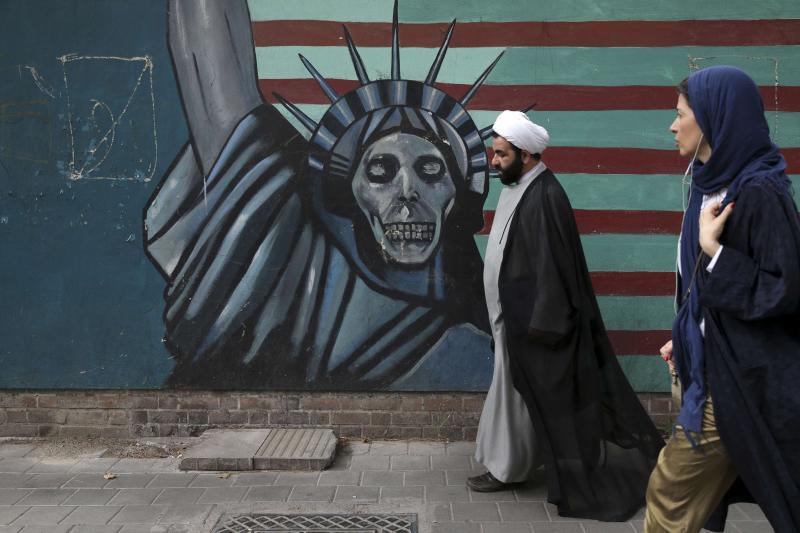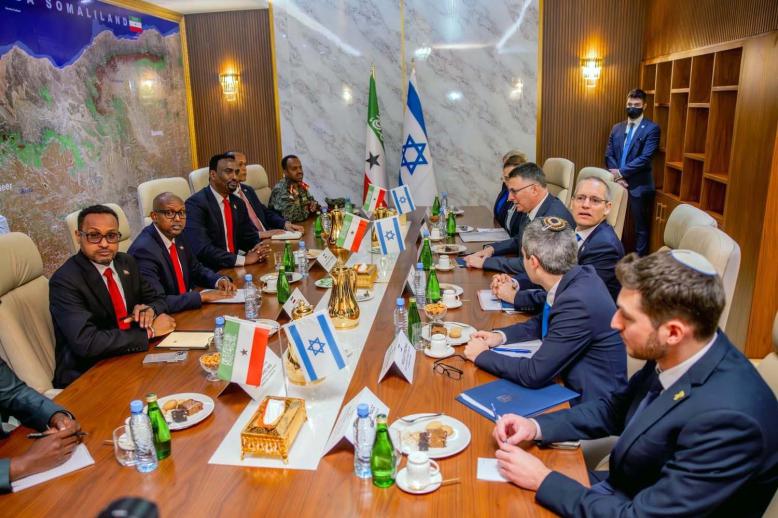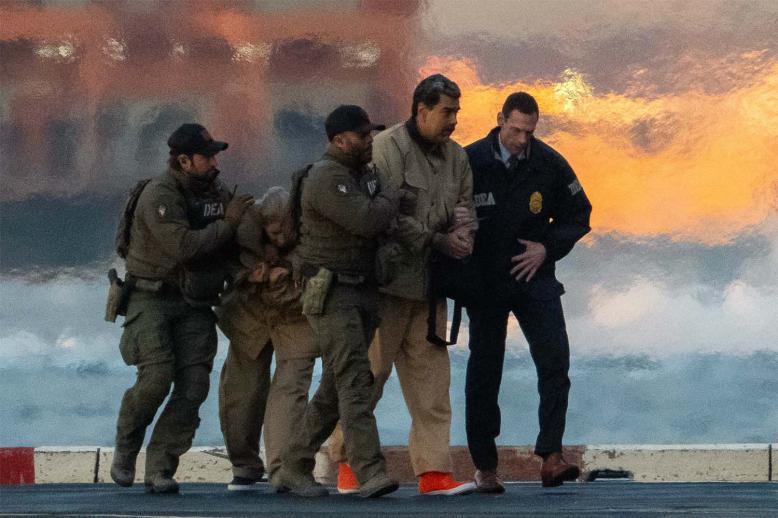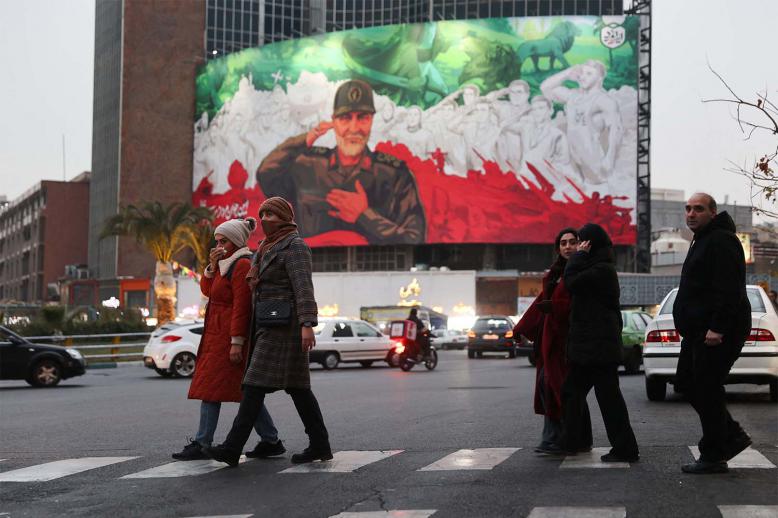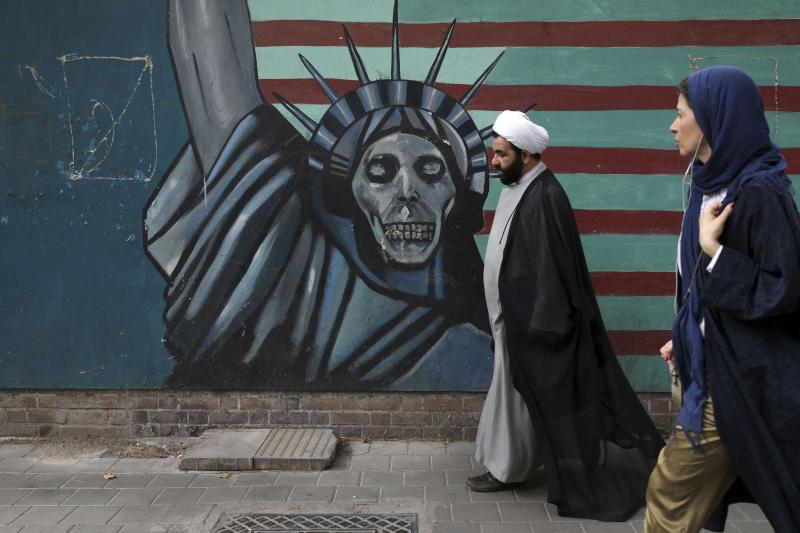Is regime change Trump’s goal in Iran?
Comments by US President Donald Trump and his top foreign policy advisers suggest that the United States’ withdrawal from the Iran nuclear agreement is not aimed at achieving a better deal but rather at bringing down the regime in Tehran.
Early hints of this strategy came in May 2017 during Trump’s speech in Riyadh at the Arab-Islamic-American summit. There he stated that until the Iranian regime is willing to be a partner for peace, all nations should isolate it, deny it funding and “pray for the day when the Iranian people have the just and righteous government they deserve.”
During his State of the Union address before Congress in January, Trump said: “When the people of Iran rose up against the crimes of their corrupt dictatorship, I did not stay silent. America stands with the people of Iran in their courageous struggle for freedom.”
Trump not only wanted to differentiate himself from his predecessor, Barack Obama, who was sharply criticised by Republicans for not being supportive enough of the Green Movement’s large street demonstrations in Iran in June 2009. Trump was also signalling encouragement to a segment of the Iranian people to continue their anti-regime protests.
Trump was criticised by many analysts for pulling out of the nuclear deal without having a Plan B but, a week-and-a-half after Trump announced he was leaving the agreement, US Secretary of State Mike Pompeo, in a speech at the conservative Heritage Foundation, listed 12 demands Iran had to fulfil. These included everything from no uranium enrichment (under the nuclear deal Iran was permitted to enrich uranium to a low level), inspection of military sites and ending its missile programme as well as its military and political support for proxies in the region.
Pompeo said that, until Iran agreed to these demands, the United States would maintain crippling sanctions on Tehran.
What is revealing about Pompeo’s speech was his remarks during the question-and-answer period that were glossed over by many observers. He said it was up to the Iranian people to “make a choice about their leadership. If they make the decision quickly that would be wonderful, if they choose not to do so, we will stay hard at this until reaching the outcome I set forward.”
All this suggests that the Trump team’s “demands” are not realistic, knowing full well that the Iranian leadership would never accept them. Indeed, shortly after Pompeo delivered his speech, Iranian President Hassan Rohani denounced the demands by asking rhetorically: “Who are you to decide for Iran and the world? The world today does not accept America to decide for the world, as countries are independent.”
It is apparent that Trump’s desire for regime change is supported and encouraged by Pompeo and national security adviser John Bolton, both of whom have long opposed the Iranian regime and now have the power to try to affect change. By suggesting that the fate of Iran’s economy and political future lies in the hands of the Iranian people, this implies that the Trump team wants Iranians to revolt against the regime.
However, this is a dangerous message that may prove to be counterproductive.
First, the United States does not have a good record in encouraging people to revolt and then going to their aid. The Hungarian anti-communist rebellion of 1956 comes to mind, as does the revolt of the Iraqi Shias and Kurds in the immediate aftermath of the Gulf War of 1991. In both episodes, US presidents failed to act after encouraging revolts and the result was much destruction and bloodshed, plus a tarnishing of the US reputation.
Second, the Trump team underestimates the power of Iranian nationalism. Although much of the Iranian population — especially the young, educated class — is opposed to the regime, as was evident in the demonstrations of December 2017 and January 2018, this does not mean that they support the US rejection of the nuclear deal or will take their cues from the Trump administration.
Being internet savvy and aware of the news, they will likely blame the United States more than the Iranian leadership for the new economic sanctions imposed by Washington and may rally around the Iranian flag.
Third, even if the Iranian people take to the streets again to oppose the regime, their economic hardships, exacerbated by the sanctions, do not necessarily translate into a pro-US position and, with Trump being so disliked in much of the Middle East, the potential demonstrators would not want to be tarnished with a pro-US brush.
The Trump strategy for regime change in Tehran rests on a lot of wishful thinking that may backfire.
Gregory Aftandilian is a lecturer at the Pardee School of Global Studies at Boston University and is a former U.S. State Department Middle East analyst.
This article was originally published in The Arab Weekly.


